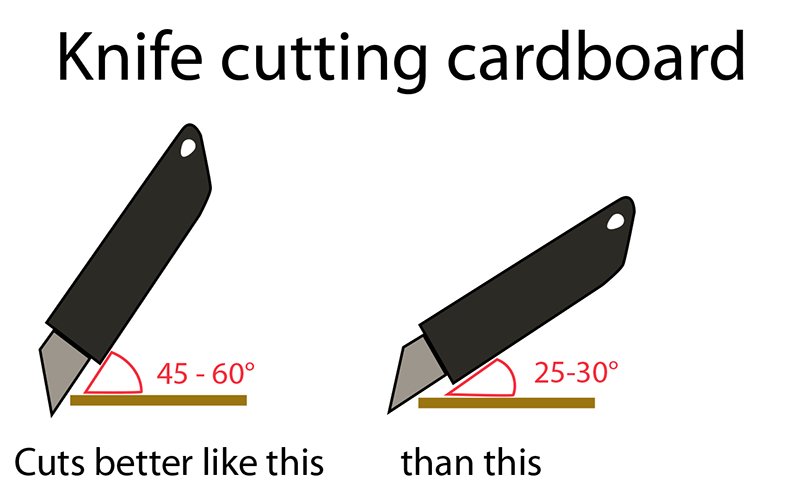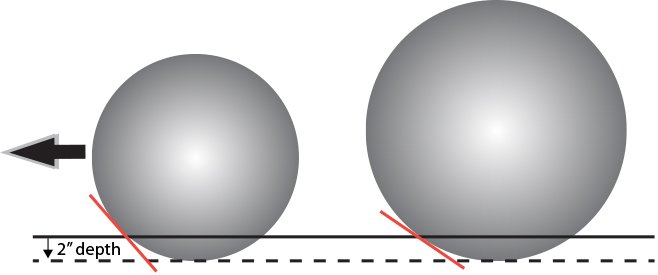Bigger isn’t always better. At least not for opener blades cutting mulch (and soil) in no-till.
Too many OEMs want to use 20 – 24” opener blades on their drills. Mostly so they can tout how long they can go before needing replacement—when what these OEMs should be doing is figuring out ways of making blade replacement easier & faster.
The problem with larger blades is that the angle of intercepting the soil line (and mulch) becomes too flat (see diagram) at normal operating depth for placing seeds, so they don’t cut well—they’re more likely to hairpin. It’s like a knife or a scissors—they cut well at certain steeper angles but tend to skate or bend the material rather than cutting when the angle is too shallow. Opener blades have the same issues. Also, it takes more downforce to hold a larger blade in the soil.
Take planters: For decades, one of the standard sizes for planter blades has been 15”. This works well for no-till when seeding at 1 – 2.5” depths. Smaller sizes presented problems in not wanting to climb over a gob of straw or whatever—they would tend to slide and push the object in front of them, especially if the soil surface was slimy and wet. Some single-disc fertilizer openers have 16” blades, and these also cut nicely. But single-disc no-till drills with gauge wheels have tended to settle on 18” and larger—sometimes much larger. For seeding 2 – 2.5” deep, an 18” blade is already starting to have issues cutting (and it’s really lousy if you want to go only 1 – 1.5” deep). As far as I’m concerned, any no-till drill having opener blades larger than 18” shouldn’t be considered a good choice—not unless you routinely seed 4 – 5” deep!
And the thicker the blade, and/or the shallower the bevel, the worse the cutting. JD 50/60/90 drills and the Case-IH P-500s / NH P-2080s use 5mm thick blades—this seems to be thick enough to make breaking a rarity and holds blade-flex to a modest level in all but the hardest soils. Some OEMs use blades that are 6 – 8mm thick, and those are much worse for hairpinning.
One more thing to think about when you upgrade seeders.
For more on this subject check out our newsletter on Seed Opener Designs.


